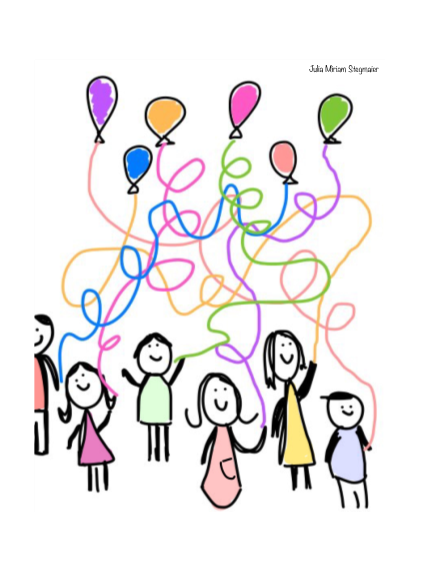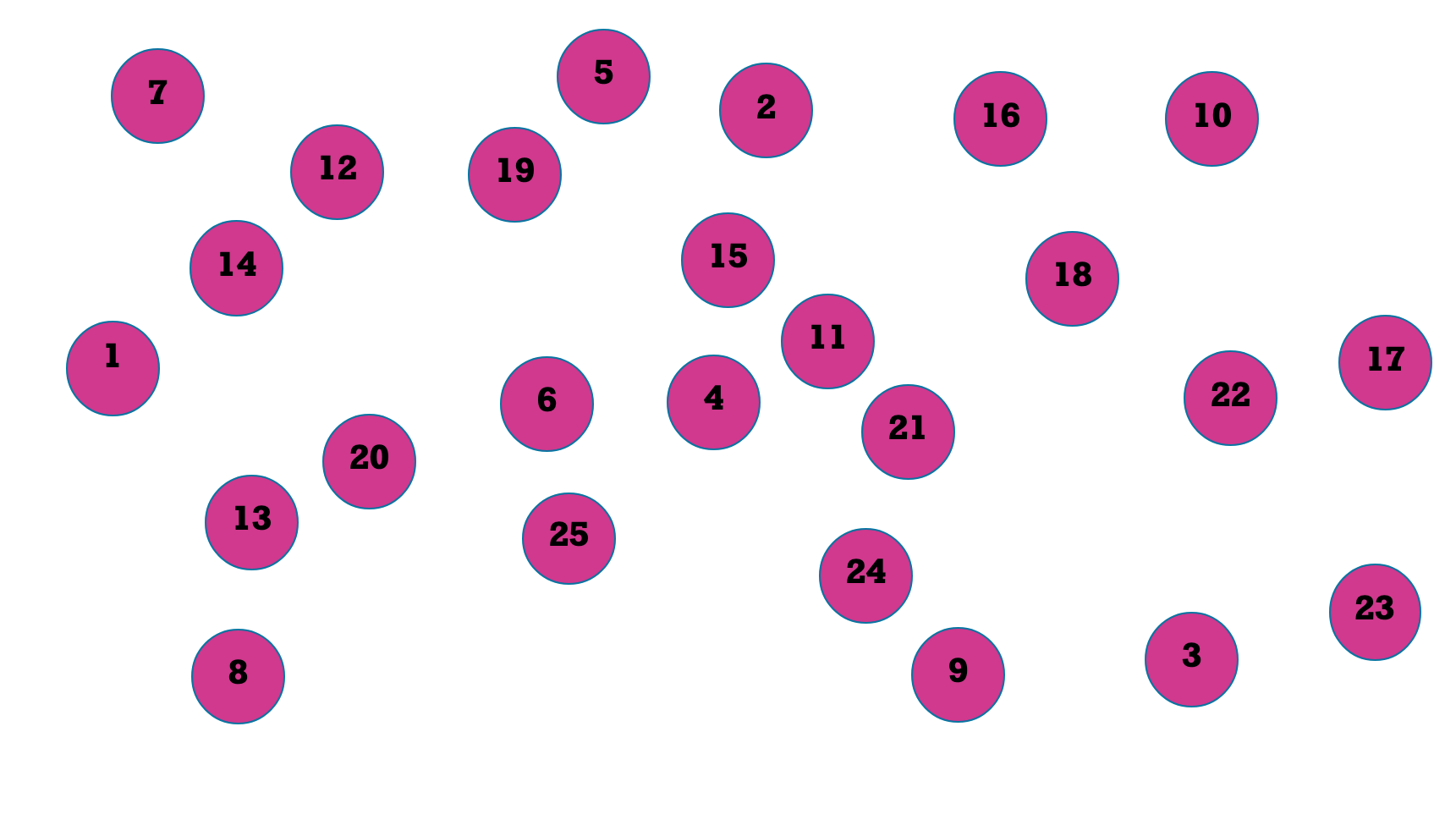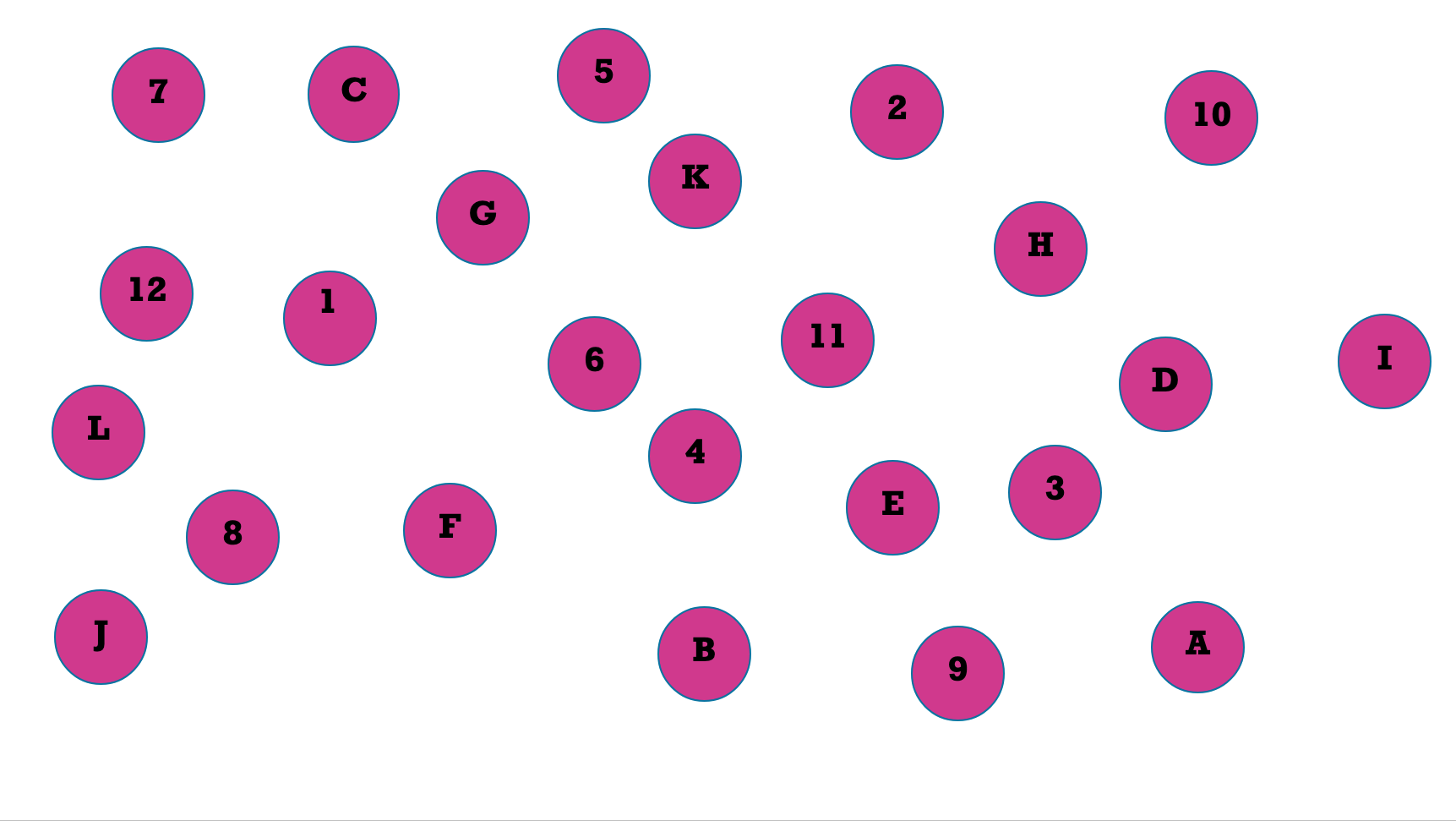5 Listen Activity 4
Activity #L4: Shiftable Attention: Trail Making Task
Now that you know a little bit about attention, you may begin to wonder how good you are at focusing. Here is an attention task that can measure both how SELECTIVE your attention is and your ability to SHIFT attention quickly from one thing to another.
Do you remember the game Connect the Dots?
Activity #L4.1

Finding which child is holding what balloon is not difficult but it does require selective attention. A Trail Making Task, used in Psychological Science to measure attention, is a lot like Connect the Dots. The picture below contains colorful dots with a number written in the middle of each. Take your finger, and acting like it is a pencil, move from dot to dot. As you move, make sure you are “connecting the dots” in numeric order from #1 until you find dot #25.

Cognitive psychologists use this to determine a person’s ability to pay attention. They would be watching you complete this task and make special note of two things: 1) How long it takes you to complete the activity and 2) Your accuracy – whether you made any mistakes and skipped over a numbered dot. People with short time and high accuracy may be good at paying attention. If you take a long time and/or make several errors, it could indicate you need to train your attention.
Thought that the task was too easy? This is trail making task, part B! Again, you want to move your finger from dot to dot in numeric order. This time you also have to pay attention to letters in the alphabet! For example, you would first find the dot with the number “1.” Then, instead of going directly to “2” you need to find the dot with the letter “A” on it, then “2” then “B” and so on. Do this until you finish with the number 12 and the letter “L.”

Think back to this task. You were required to SHIFT your attention over and over between two different details (numbers then letters). First, you should realize that you can do it! Also, you get better at shifting your attention with practice (especially when you know the information like numbers and letters – imagine how hard this task would be for a 5-year-old!).
Shifting attention may be trainable; however, how effective it may be depends on the WHAT – what it is you are shifting your attention to and from.
 Activity #L4.2
Activity #L4.2
Perhaps the training piece of shifting your attention makes you think of the term multi-tasking. Multi-tasking is our ability to do more than one thing at a time. I used to declare myself the best multitasker and would boast to my husband (then boyfriend) how effectively I could do more than one thing – better than him, of course. Being good at multi-tasking is a big learning myth. This is one that even I had to learn as a psychology student. There is really no such thing as being a good multi-tasker.
People think they can do more than one thing at a time, and they can! However, what happens more often than not is that one of the two activities suffers. Government authorities like health and safety departments have relied on decades of research on multitasking to tell the general public that talking on a phone while driving is not safe. While I’m sure you’ve heard this 1,000 times, it sometimes takes a very harsh lesson to fully realize the truth. That is why authorities and even cell phone companies have spent millions of dollars on advertising to show the realities of texting or talking while driving. We now know that texting while driving proves to be more dangerous in terms of traffic violations and potential accidents than driving under the influence of alcohol.
Less serious but still effective is the example of talking to your dad on the phone while browsing the internet. You know you cannot truly listen to what your dad is saying when you are checking social media.
Selective attention can be trained so that you CAN effectively do more than 1 thing at a time. The training is important as you have to be able to prove that you can do both tasks without either one of them suffering.
 Activity #L4.3
Activity #L4.3
The second feature of attention you need to know for effective learning is “IT CAN SHIFT” Importantly, what we have typically thought of as multi-tasking is really our brains shifting from one task to another. In only more rare occurrences or with intensive practice can we do two highly skilled tasks at a time.
